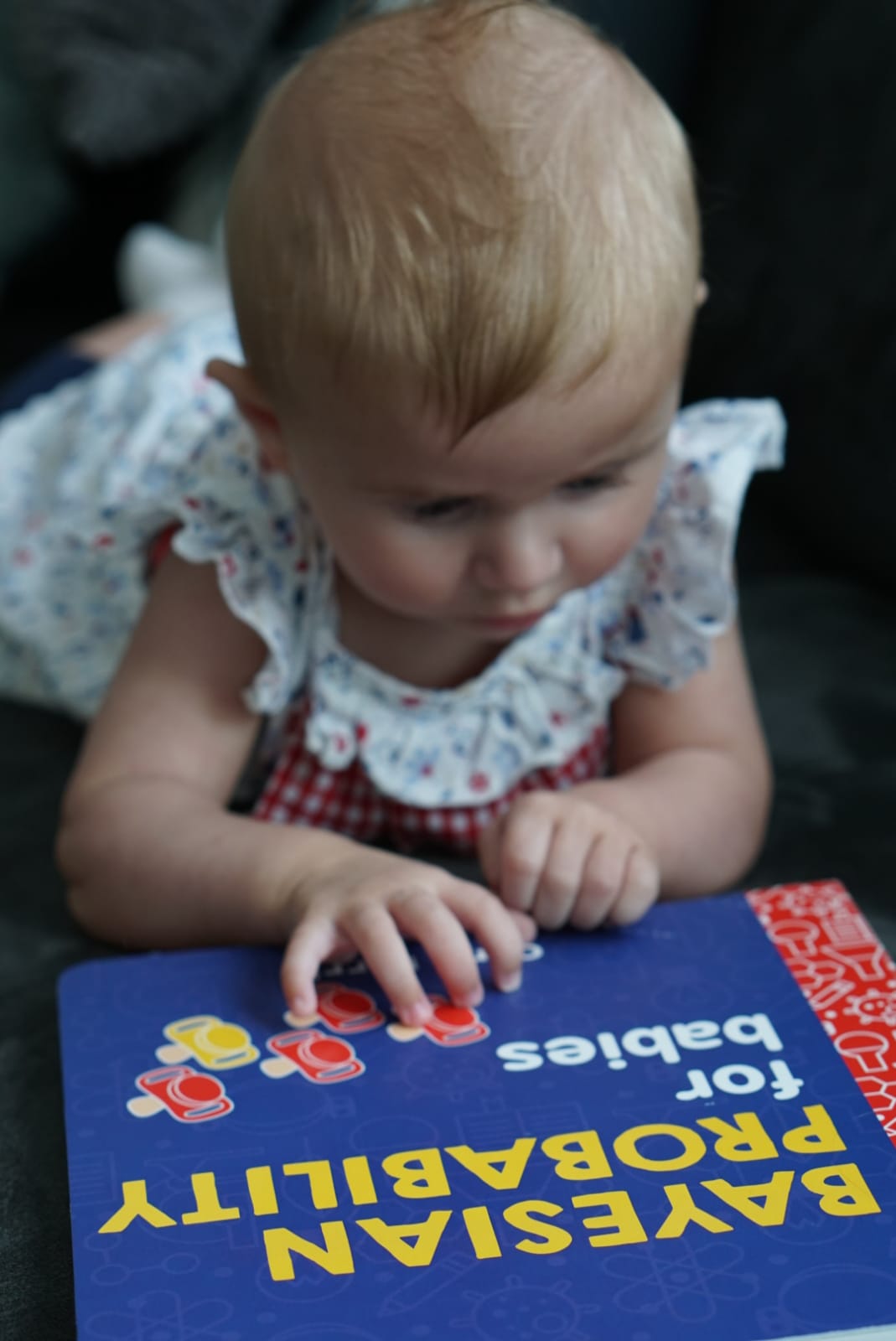“Bayesian Probability for Babies” is a book that explains Bayes’ rule through a simple story about cookies. I battle-tested the book on my two-year old son Theo (admittedly no longer a baby), and he seemed somewhat intrigued by the idea of candy-covered cookies, although the more subtle points of the story must have eluded him. Theo gives the book three out of five stars: the cookies are a good idea but the book has no dinosaurs.
My main gripe is that the book is not about Bayesian probability, as the title promises, but about Bayes’ rule; specifically, the book offers a frequency-based explanation of how to take base rates into account (as has been advocated in the non-baby literature by Gerd Gigerenzer). The book mentions a “prior distribution” and a “posterior distribution”, but these are not distributions of uncertainty or belief – instead, they refer to cookies being physically distributed in space.
In sum, the title of the book does not describe its contents, and some key terminology seems incorrect or at least highly unusual. The core idea is great, and the artwork is good, but conceptually this feels a little like a missed opportunity (were Bayesian statisticians consulted? They should have been). The book also does not feature dinosaurs. All in all, two-and-a-half out of five stars, with strong encouragement to the author to bring out a revised edition.
References
Ferrie, C. (2019). Bayesian probability for babies. Sourcebooks.
About The Author

Eric-Jan Wagenmakers
Eric-Jan (EJ) Wagenmakers is professor at the Psychological Methods Group at the University of Amsterdam.



